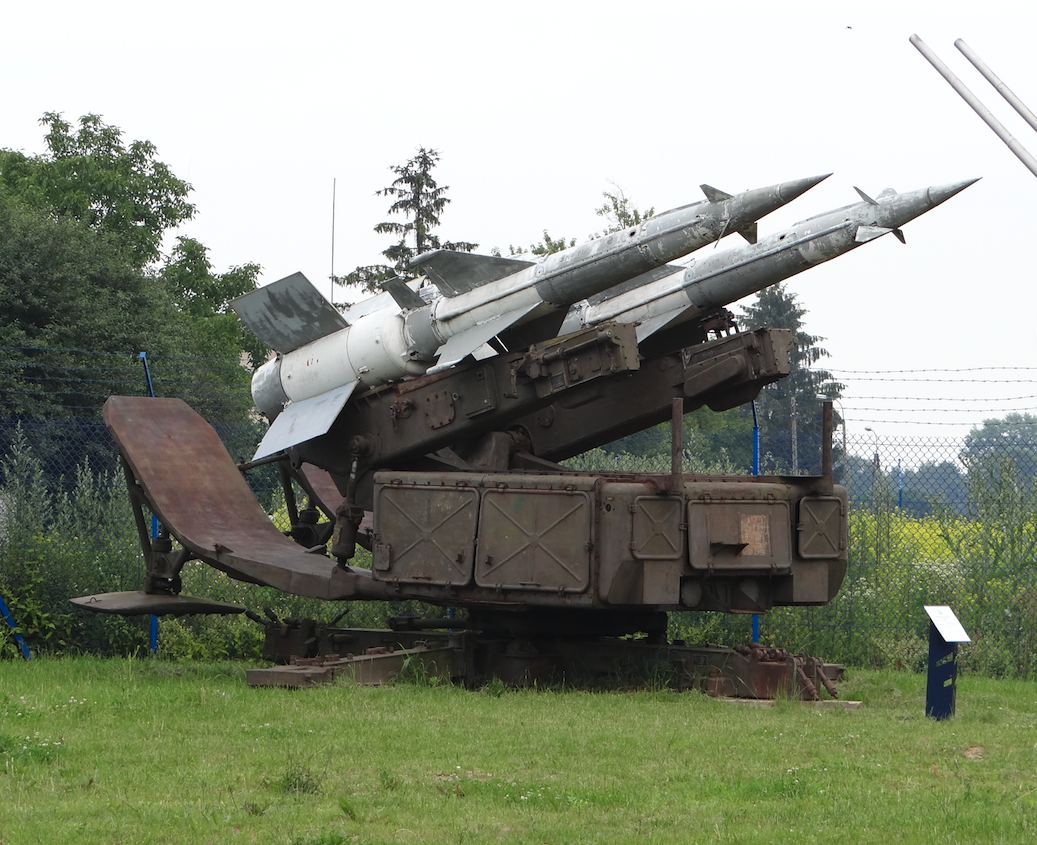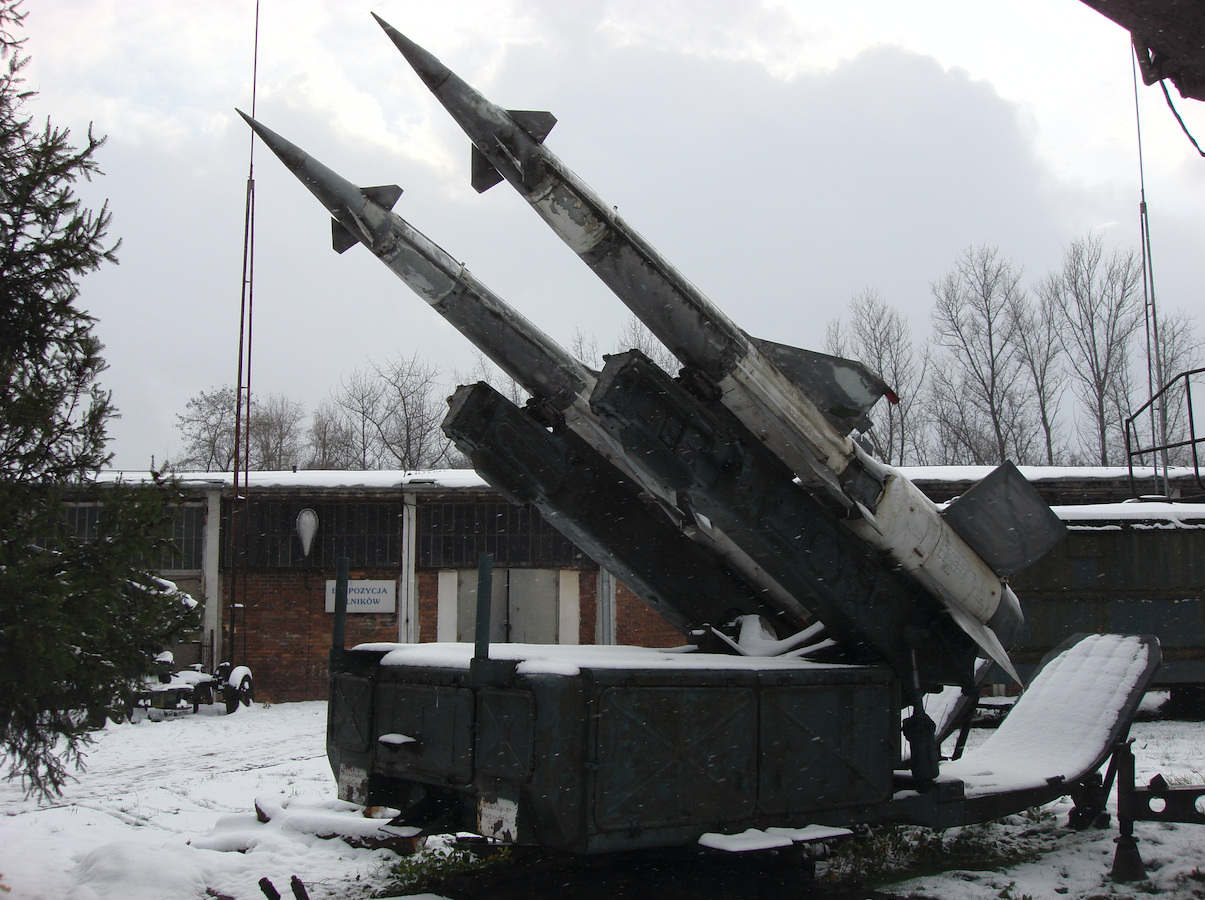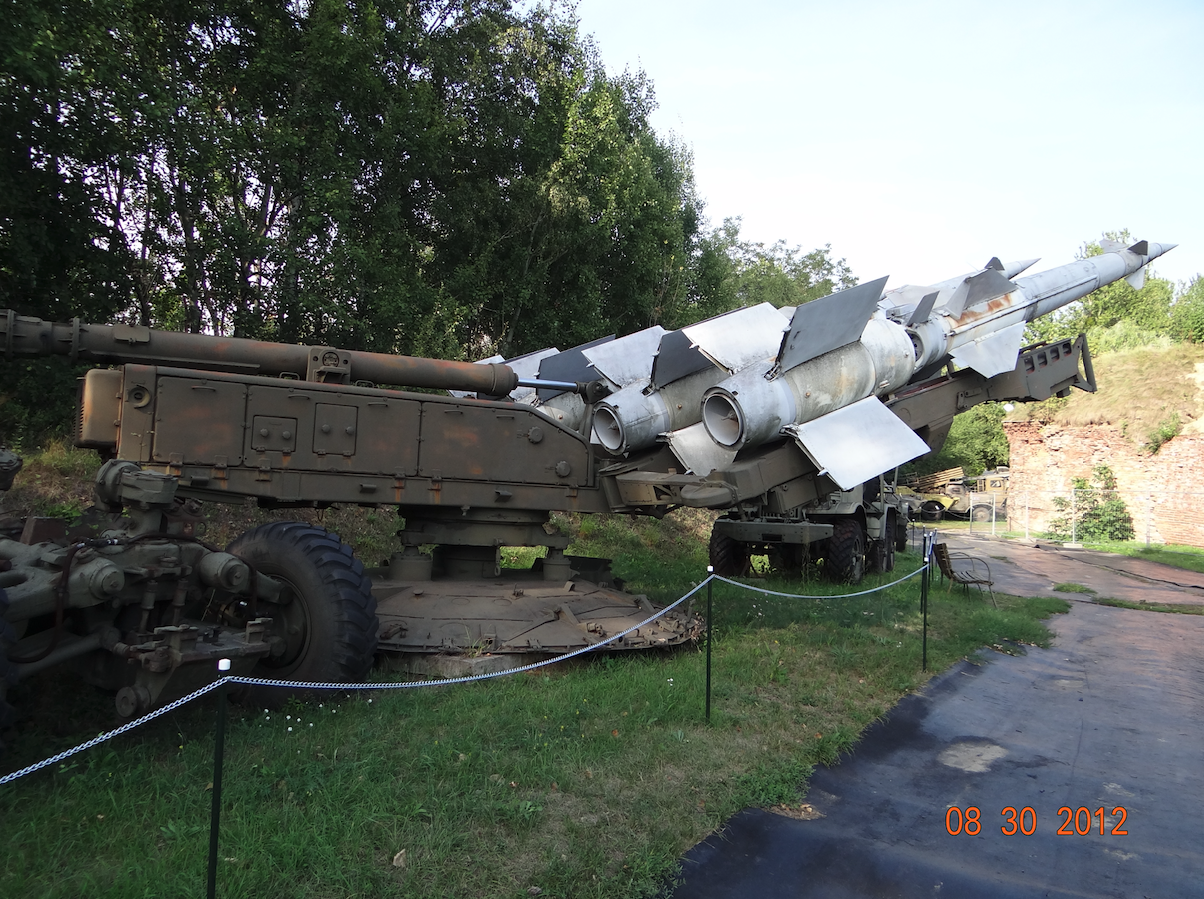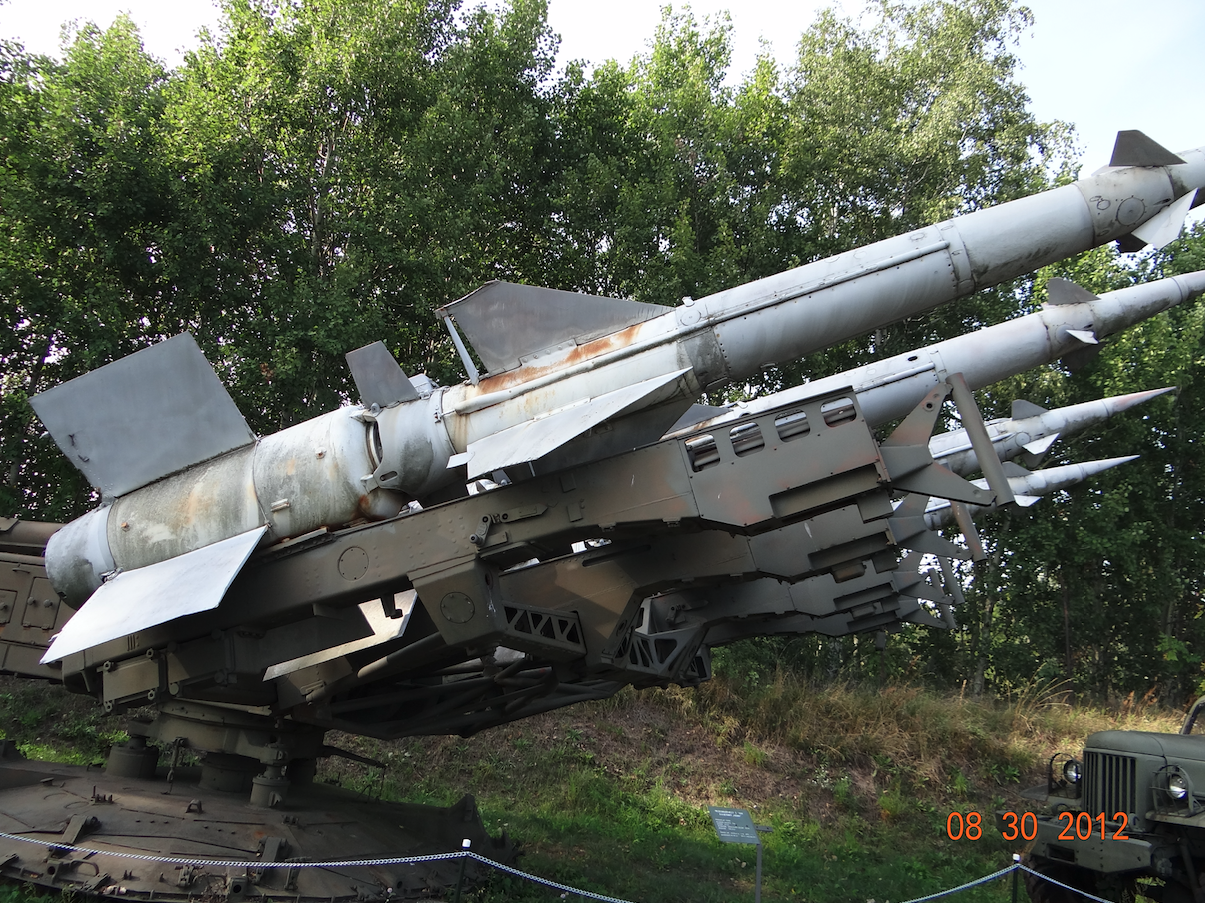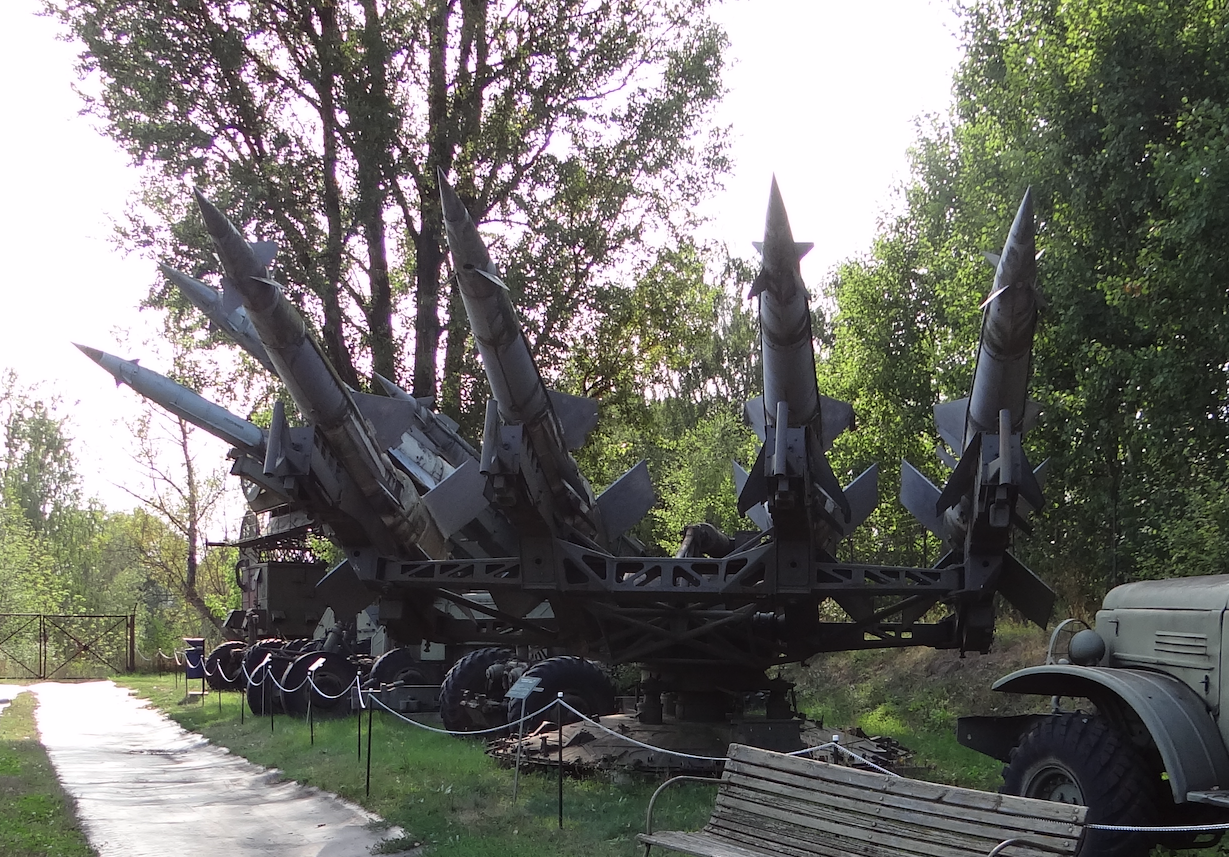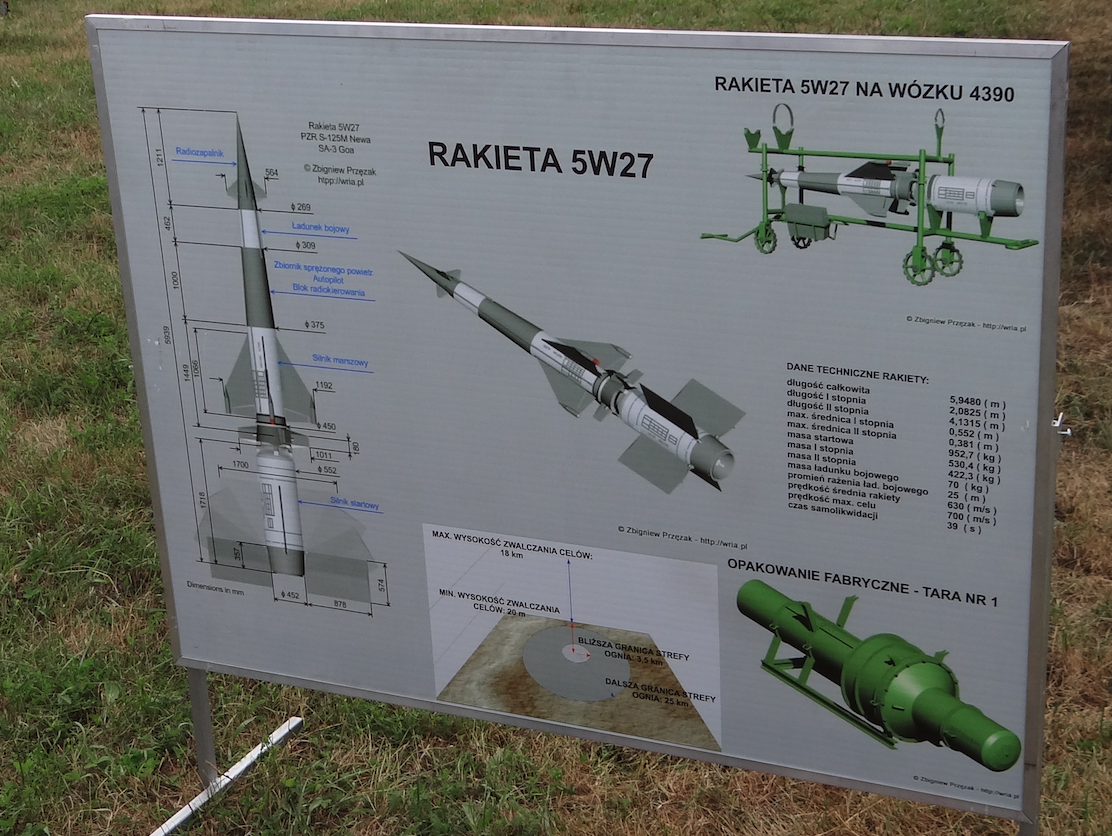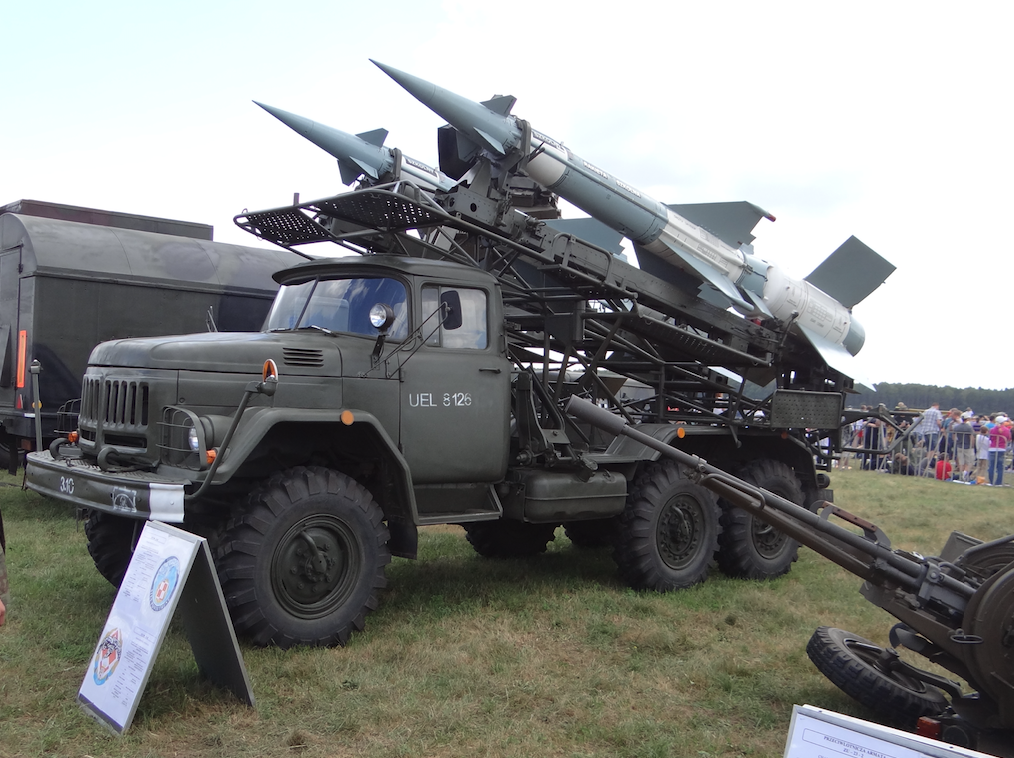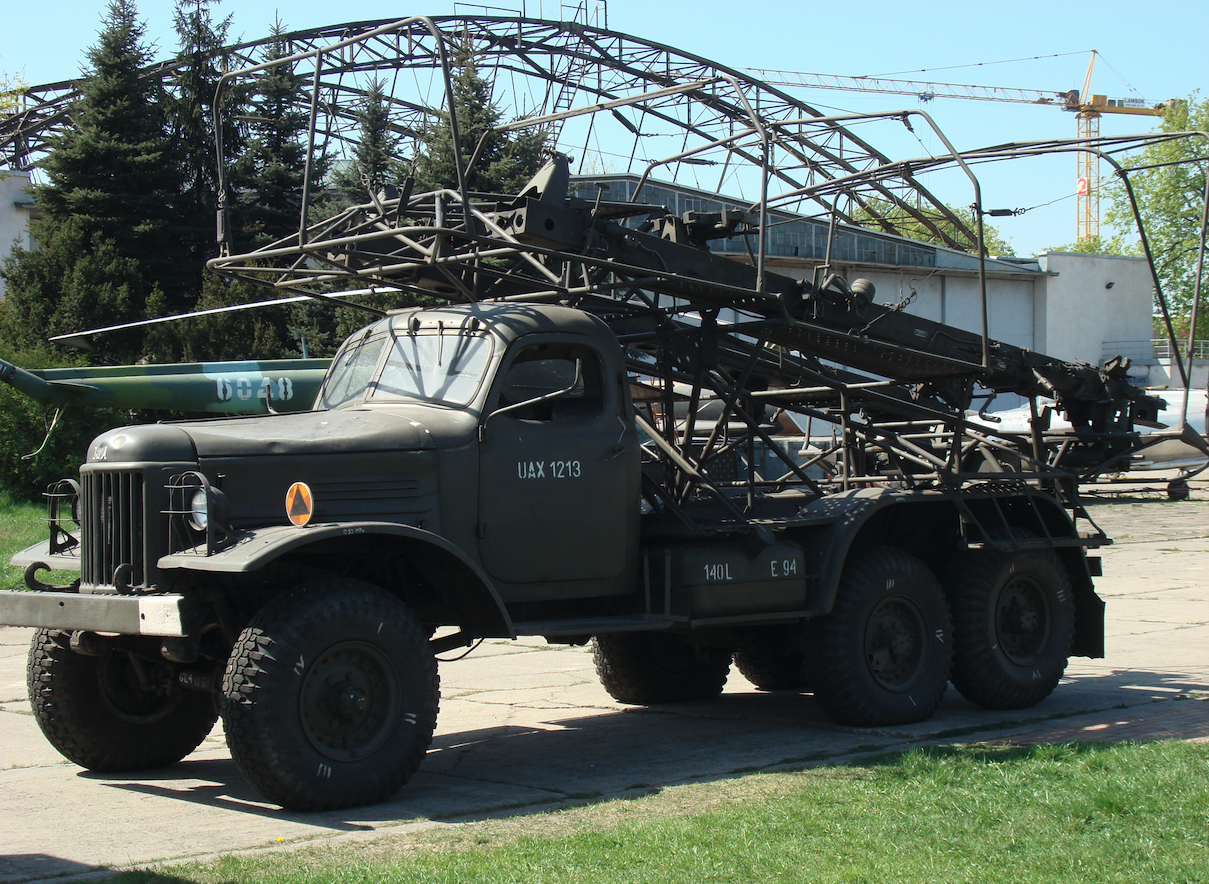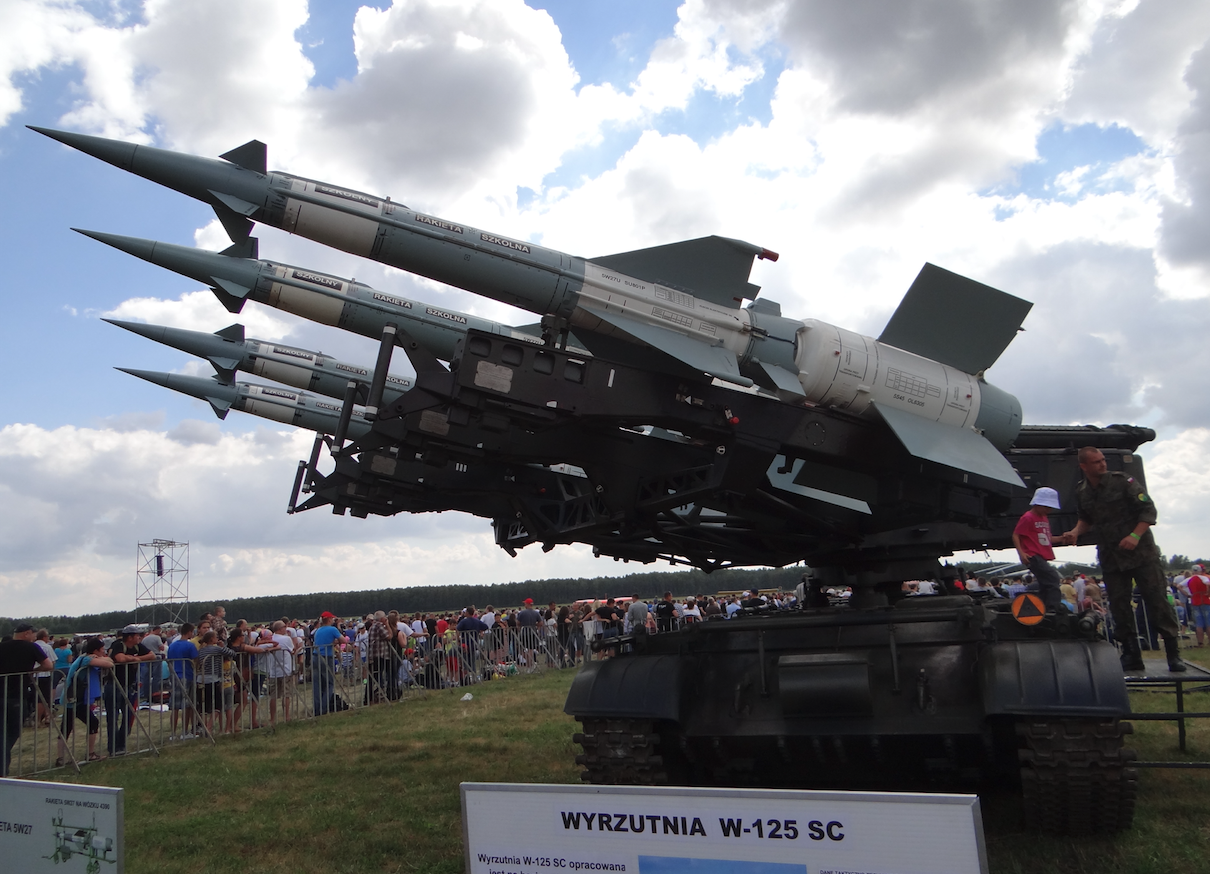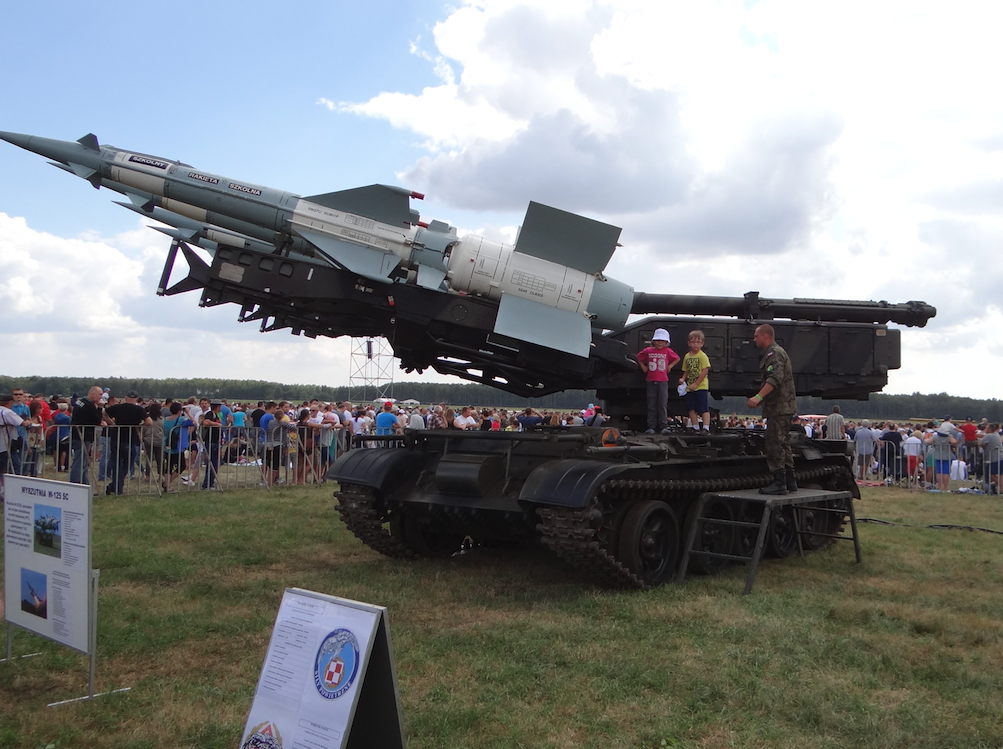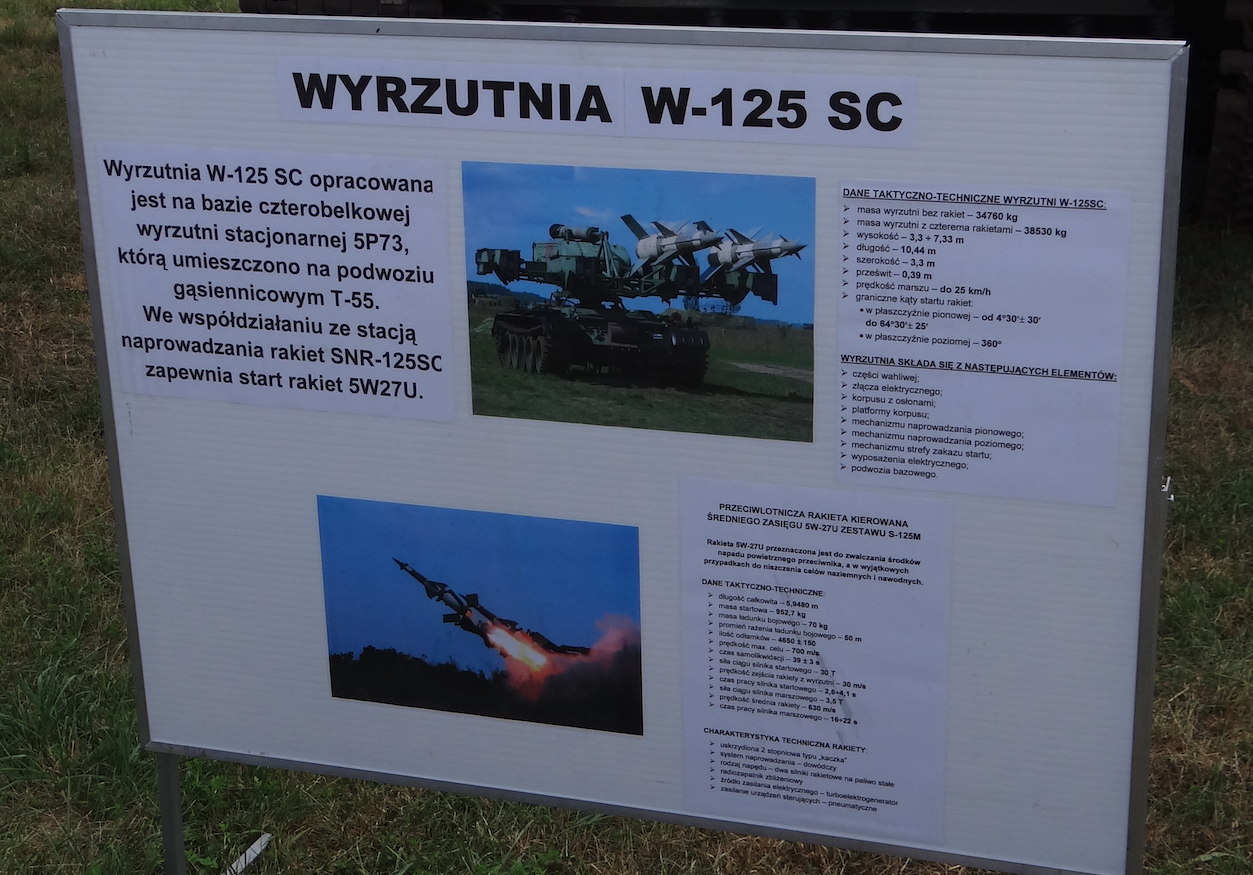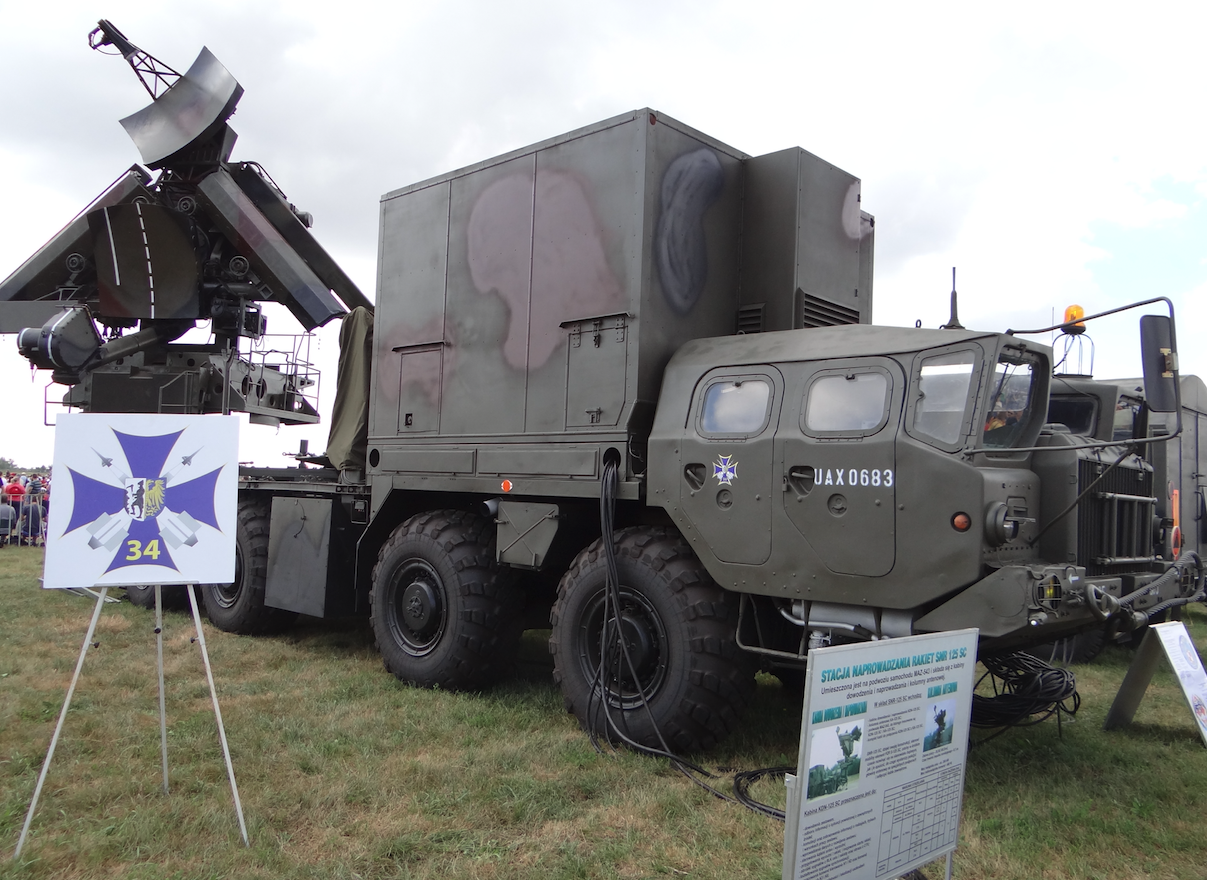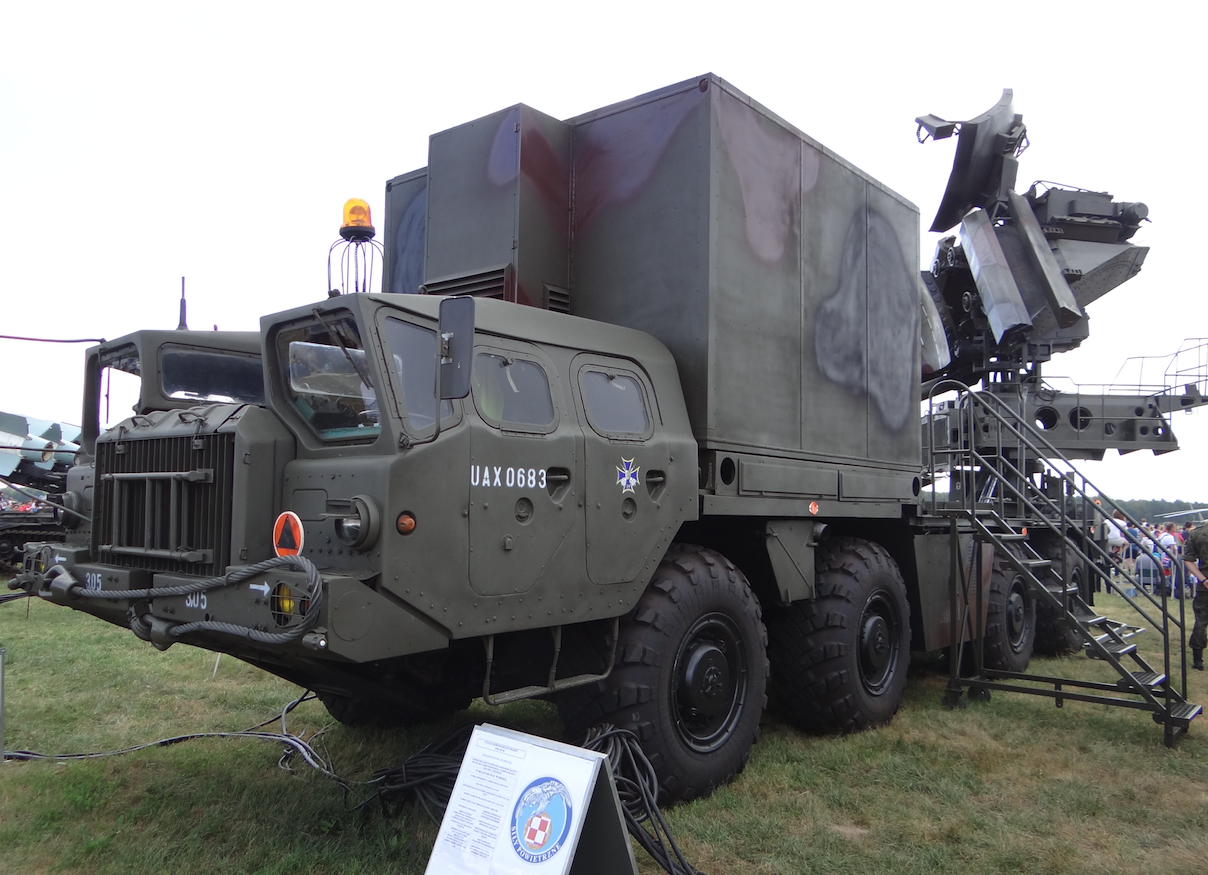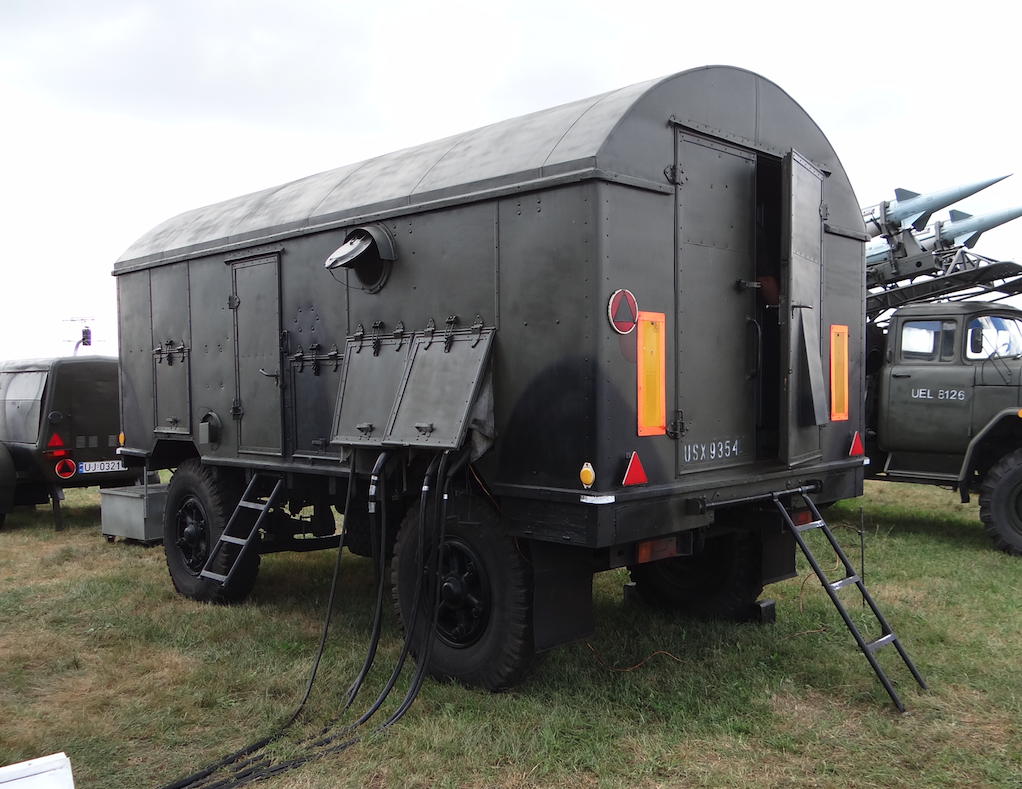Kraków 2020-09-29
S-125 Newa-SC Anti-Aircraft Missile System
PZR S-125 Newa.
The S-125 Anti-Aircraft Missile System was developed by the CCCP to complement the S-25 (stationary system defending Moscow) and S-75 (high-altitude anti-aircraft system). The S-125 Neva system has a shorter range, lower fire ceiling and slower flight speed. However, it makes it better suited to combat highly maneuvering aircraft. In addition, both stages of the rocket are powered by solid fuel, which greatly facilitates their operation.
Work on the S-125 system began in 1956. In CCCP, work on the S-125 mobile system was abandoned, and limited only to stationary sets. Serial production of the missiles began in 1959 at the Production Plant No. 32 in Kirov. The formation of the first S-125 combat system squadrons began in 1961, placing them on the outskirts of Moscow.
In 1959, work began on the naval version of the S-125 Neva system, which was designated M-1 (Volga-M). This system was used on cruisers and destroyers since 1962.
The S-125 Neva system was designated in NATO SA-3 Goa. The export versions were called S-125 Pechora and had 5W24 or 5W27 Wolna missiles.
The first versions of the S-125 system used a fixed dual-rail launcher.
Description for the photo: Stationary two-rail launcher of the S-125 Newa system. The launcher weighs 12,770 kg. The launcher carries 5W27U air-to-ground missiles. Projectile weight 946 kg. Overall length 6.10 m. Diameter 0.55 m. The effective range of fire is 25,000 m. Effective countering ceiling is 12,000 m. The lower limit of countering targets is 20 m. The maximum speed is 3.5 Ma.
In 1970, the new 5P73 quadruple launcher was introduced.
Description for the photo: A stationary four-rail launcher of the S-125 Newa system. The launcher weighs 18,500 kg.
In 1993, for export, Russia proposed a new version with digital signal processing, improved radar, better range, and fewer handling soldiers.
The S-125 system entered the service of Egypt and Syria and was used against Israel’s air force during the wars of 1970-1973. Then a few more countries bought the S-125 system.
The system includes the P-12 Maria or newer P-18 Laura radars and the P-15 or P-19 Danuta radar.
PZR S-125 Neva in Poland. 1969 year.
The first PZR S-125 set was delivered to Poland in 1969. It was exactly the PZR S-125 M Newa. The S-125 system was used by several missile squadrons. In June 1971, the first shooting was made at the CCCP range. Deliveries were completed in 1978. The S-125 system has proven itself as a defense system for domestic facilities. The set is capable of firing 5W27U and 5W27D missiles. Their range is 25 km, and the ceiling is 18,000 m. In 1985, the rearming of missile squadrons from the S-75 Volkhov system to the S-125 Neva system was started.
Modernization of the PZR S-125 Newa-SC system.
In Poland, it was decided to leave the system and modernize it so that it could be used until around 2020, i.e. until new missile systems are purchased.
In the period 1992-1994, the first modernization of the S-125 Newa system was made in Poland. The goal was to obtain mobile missile sets. In 1995, the second stage of modernization of the S-125 system combat equipment was completed. The tracked chassis was replaced with the wheeled MAZ-543 chassis, on which the antenna column and launcher were mounted.
In 1996, another modification of the S-125 system was made. The missile launchers with four guides were placed on the chassis of the T-55 tank. The KDN-125 command cabin and the antenna column are now placed on the MAZ-543 wheeled chassis, which previously served as 9K72 Scud-Elbrus rocket launchers. Until 1998, the system was tested, improvements were made, the electronics were replaced, and the mobility of the system was improved. It was completely dependent on the supply of spare parts from Russia. This is how the PZR S-125 Newa-SC system was created. The letters SC stand for "self-propelled – digital".
All sets used by the Polish Armed Forces have been modernized to the S-125 Newa-SC standard at the Military Electronic Works in Zielonka (command cabin) and the 1st Material and Technical Base in Toruń (installation of the command cabin, antenna column and launcher on self-propelled chassis).
During the modernization of the PZR to the SC version, the analog control system based on electron tubes was replaced with a modern, microprocessor-based control system. The rocket launchers were mounted on the tracked chassis of the T-55 tank, and the radar guidance and target tracking station and rockets were mounted on the 8-wheel chassis of the MAZ-543 truck. MAZ cars came from the Scud rocket launchers, withdrawn from service in Poland, which significantly increased the mobility of the set.
A KA-125 SC antenna column and a KDN-125 SC command cabin were mounted on the MAZ-543 car. A modern signal processing unit has been installed in the command cabin. Operators operate the system with LCD monitors. Modern electronic components have been used to ensure long-term access to spare parts. Modern software increases the possibilities of managing individual elements of the missile system. The renewed station has gained in reliability.
5W27 missile.
The 5W27 (4K90) missile is a two-stage rocket. There is also a designation of the W-600 or RZ-61 missiles. Both stages have solid fuel rocket engines. A characteristic feature is the fins, which are folded before take-off, although they do not look like that. After take-off, they are unfolded inertia along the axis of rotation, 90 degrees backwards. The axis of rotation is located in the corner of the stabilizer, next to the rocket engine exhaust nozzle. The diameter of the starter motor (first stage) is 0.55 m. The start motor runs for 2.6 seconds. After the fuel has burnt out, it is discarded.
The second stage is equipped with wings with a delta contour. The tail is placed in the front of the rocket. The diameter of the second stage is 0.37 m. The marching engine runs for 19 seconds and accelerates the projectile to a maximum speed of Mach 3.5.
The total length of the 5W27 (4K90) missile is 6.1 m. The weight is 946 kg. The missile has a high-explosive warhead weighing 60 kg, fired by a radar or contact fuse. The missile has a self-destruction system.
The missiles are transported, two rockets each, on the Zil-151 (older) or Zil-131 (newer) transport and loading vehicle.
W-125 SC launcher.
Rocket Guidance Station SNR 125 SC.
Rocket Technical Cabin SNR 125 SC.
Written by Karol Placha Hetman


